Contents
Market Overview
Election jitters and a resurgence in lockdowns across Europe caused equities to slump. Markets remain fixated on Tuesday’s election, although the FOMC may act as a backstop should volatility spike. Volatility was indeed the theme of the past week as the VIX gapped above 40 on weaker earnings, election consternation and more broadly around the COVID-19 question (vaccine development versus tighter lockdown measures in Europe). As lockdowns intensify, the question of high oil inventories are in focus and this lent on crude, which tumbled 10% this week. The need for further engagement from OPEC+ via the JMMC is now key, even if we are seeing diverging fortunes in U.S. vs Eurozone PMIs. Beyond that, the ECB kept rates unchanged as expected but left the door ajar for further intervention in December. Meanwhile, U.S. treasuries widened on Lagarde’s comments after the U.S. GDP print, but lagged more considerably after the weak 7yr auction in $53bn that priced 1.3bp wider than secondary. As breakevens etched lower and were coupled with higher nominals, real yields declined to -87bp having sat at -100bp for quite some time. The Turkish lira also remained under pressure and made fresh highs, although the CBRT tightened liquidity further by ceasing access to the reverse repo market on the Borsa Istanbul (11.75%). This in turn will force banks to fund within the late liquidity window (14.25%), which means that the likelihood of hiking the one-week swap rate for a third time in six weeks (11.75%) is now reasonably high. This will push the weighted average funding rate comfortably above 13%, which is already up 186bps in October. EM credit held up relatively well amid the renewed volatility and only ended down 0.3% on the week. Generally, we saw Lebanon, Bolivia and Kenya outperform, as Suriname, Sri Lanka & Tajikistan lagged. Turkey will also report CPI for October on Tuesday which is expected to come in at 12%, up from 11.8% previously, and follows the Central Bank year-end forecast revision to 12.1% from 7.9%. Central bank rate decisions are also due from Poland, Czech Republic and Malaysia, which come before the Fed on November 5th. Away from those events, we would expect some focus on Chinese exports, Hong Kong retail sales and inflation readings out of Colombia, Indonesia, Peru, the Philippines and Thailand. We would also expect investors to watch the Fitch rating review of Romania over the weekend, given potential fallen angel risk (rated BBB- with a negative outlook).
Fixed Income
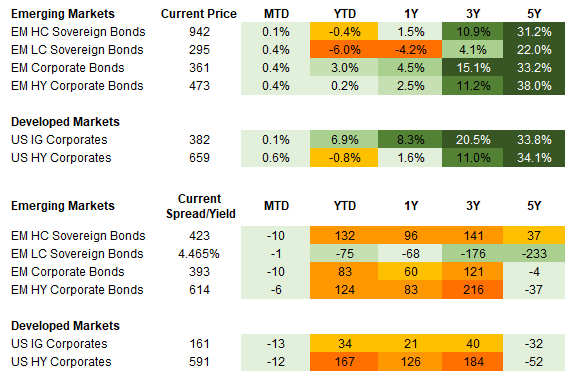
Equities
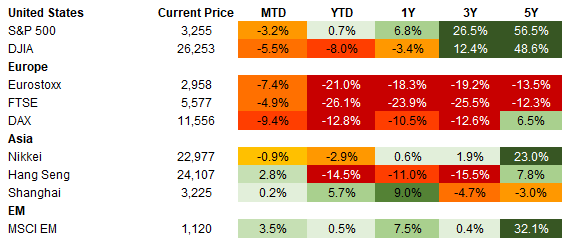
Commodities

Source for data tables: Bloomberg, JPMorgan, Gramercy. EM Fixed Income is represented by the following JPMorgan Indicies: EMBI Global, GBI-EM Global Diversified, CEMBI Broad Diversified and CEMBI Broad High Yield. DM Fixed Income is represented by the JPMorgan JULI Total Return Index and Domestic High Yield Index. Fixed Income, Equity and Commodity data is as of October 30, 2020 (Mid Afternoon).
Emerging Markets Weekly Highlights
South Africa’s Medium Term Budget Statement (MTBS) underwhelms; Chile’s population greenlights a new constitution; Renewed lockdowns in Europe increase the risk of a double-dip recession and Global emerging market corporates in focus: Considering call options on subordinated securities.
South Africa’s Medium Term Budget Statement (MTBS) underwhelms
Event: Finance Minister, Tito Mboweni, presented the government’s MTBS on October 28th which outlined fiscal consolidation from a headline deficit of 15.7% of GDP this fiscal year (FY) to 7.3% of GDP by FY 2023/24, slightly better than consensus expectations. However, a primary surplus is not expected to be reached until FY 2025/26 at which time debt is set to stabilize around 95% of GDP. The budget assumes a real GDP growth rate of 3.3% next year.
Gramercy commentary: We view the MTBS as lackluster particularly from an expenditure and issuance standpoint with overreliance on growth enhancing reforms. South Africa does not have the fiscal flexibility to opt for such a policy mix particularly when details and commitment to growth supportive reform are limited. Cost reduction in certain areas could actually have a net positive impact on activity as the country’s fiscal multipliers have steadily declined and potentially moved into negative territory. While the proposal to freeze public sector baseline salaries for three years is constructive, more is needed to ensure debt sustainability and boost economic competiveness. The political feasibility of the freeze remains in question, and as such, public sector wage negotiations in 1Q21 will be of great importance. The government’s growth forecast is slightly above (0.3%) IMF and market consensus estimates and the potential for underperformance is decent in the event of a more challenging pace of global recovery from the pandemic or lingering domestic weakness. Domestic bond issuance in FY 2021/22 is set to increase slightly to R472bn (vs. R462bn currently) while net short-term debt issuance is forecast at R67bn and could face upward pressure as market conditions evolve next year. Given sustained high issuance, upside risk to expenditures amid pushback from unions on wage cuts, and downside risk to revenues from a still challenged growth environment, we see asymmetric risk to the downside in South African assets and expect the local curve to continue to steepen.
Chile’s population greenlights a new constitution
Event: This week, a large majority of Chilean voters (78%) supported via referendum the drafting of a new constitution. The referendum was a key demand by protestors who took to the streets in late 2019 during the largest episode of civil unrest in decades. Voters also backed a constitutional convention formed from newly elected representatives to write the new charter, rather than a mixed body slit between new delegates and existing lawmakers. The drafters of the new constitution will be elected in April 2021 and the whole process is expected to conclude by mid-2022.
Gramercy commentary: The outcome of the referendum was expected and reflects a “demand for change” exhibited by populations across Latin America and beyond. A wide-range of grievances against entrenched politics had already gathered momentum prior to the COVID-19 outbreak and we expect it will only grow stronger in its aftermath given the social and economic fallout from the pandemic. Chile is a particularly interesting case study of “social discontent”, being the country with the highest GDP per capita in Latin America and a beacon of macro stability, but also one where inequality has increased rapidly in recent years. The main risk from a market perspective is that the new constitution will put a larger economic and social burden on public coffers, reflecting demands by the population for better and broader access to education, healthcare and other critical social services. All else being equal, we do not expect the orthodox macro-economic framework in Chile to shift radically as a result of the new social contract when it comes into effect in a couple of years. In addition, owing to years of prudent and conservative economic policymaking, Chile has the fiscal space to accommodate social demands by its citizens, even in the aftermath of the massive exogenous shock caused by the pandemic. Unfortunately, not many sovereigns in Latin America and the broader emerging markets universe enjoy Chile’s strong pre-crisis starting position and are likely to face increasing fiscal pressures in the face of social demands as they try to rebuild their economies in the aftermath of the pandemic.
Renewed lockdowns in Europe increase the risk of a double-dip recession
Event: In response to significant increases in new cases and hospitalizations, Germany and France, continental Europe’s two largest economies, announced new lockdown measures to try to curb the resurgence of COVID-19 as the cold weather kicks in. Germany announced a one-month partial shutdown while France’s plans are more restrictive: a month-long lockdown for bars, restaurants, most non-essential shops and services, and restrictions on domestic travel. Elsewhere in Europe, Ireland and Portugal have both imposed new restrictions and Italy, the first COVID-19 hotspot in Europe earlier in the year, is reportedly considering regional lockdowns.
Gramercy commentary: While new lockdown measures and restrictions are more targeted and less severe than those taken during are the first wave, they will certainly have a negative impact on 4Q economic activity relative to baseline scenarios assumed before the lockdowns. Europe’s renewed struggles with the virus will likely impact investor expectations for other regions that followed in Europe’s footsteps during the first wave of the pandemic and increase the probability of a double-dip recession, which is seen by the majority of investors as the biggest risk for 2021. In this context, the likelihood of additional stimulus measures by the European Central Bank (ECB) increases and we’ll be watching closely for investors’ reaction within the “bad news (for the real economy) is good news (for markets)” paradigm in which the disconnect between financial markets and fundamentals is growing larger. Additionally, as we have highlighted before, emerging markets have far less flexibility in terms of closing down their economies due to lack of unlimited monetary support (unlike developed markets) and generally weaker safety nets. As such, a material resurgence of the virus in emerging markets will likely present many governments with increasingly difficult policy choices over the coming months.
Global emerging market corporates in focus: Considering call options on subordinated securities
Events: Albaraka Turk and National Bank of Oman have become the latest issuers to decide against exercising call options on subordinated securities. The U.S. $250mm Albaraka Turk (ALBRK) 10.5% Tier 2 bond will remain outstanding after the November 30 first call date, and so will the U.S. $300mm National Bank of Oman (NBOBOM) 7.875% Tier 1 security, with a first call date on November 18. The ALBRK bond has a once-only call while the NBOBOM bond is callable at every semi-annual coupon payment date.
Gramercy commentary: Albaraka Turk and National Bank of Oman join emerging market lenders including Ahli United Bank and Bank Dhofar in leaving subordinated instruments outstanding after the first call dates. Conversely, issuers such as Vakifbank, First Abu Dhabi Bank, Emirates NBD and Banco do Brasil have all called such securities in the past 12 months. What this appears to show is that there can be no certainty that calls will be exercised, even where a bank operates in the same country as a competitor that redeemed a similar bond. Having said this, it does appear that larger lenders in emerging markets, which often have more bonds outstanding, have been more likely to exercise call options on subordinated debt this year. It is possible that replacement cost considerations played a role in some banks’ decisions not to call subordinated instruments. Those banks’ positions may well be revisited if market conditions permit new securities to be issued at cost-effective levels, or if capital that will be lost can be replaced in other ways (such as share capital increases). For securities with once-only calls, liability management exercises (specifically exchange or tender offers) could be used if these lenders renege on previous decisions to skip calls. For lenders that did choose to redeem bonds at the first call dates, reputation considerations may have carried more weight than concerns about replacement costs. As one example, Vakifbank announced its decision to call a U.S. $500mm Tier 2 instrument in December 2019. Just prior to that announcement, the indicative yield to the February 2020 call was well over 10%. Redemption of subordinated securities typically requires regulatory approval. None of the named banks has given this as a reason for not exercising call options on securities. Regulatory pressure may well be a factor at banks where capital ratios are close to required minimums.
Emerging Markets Technicals
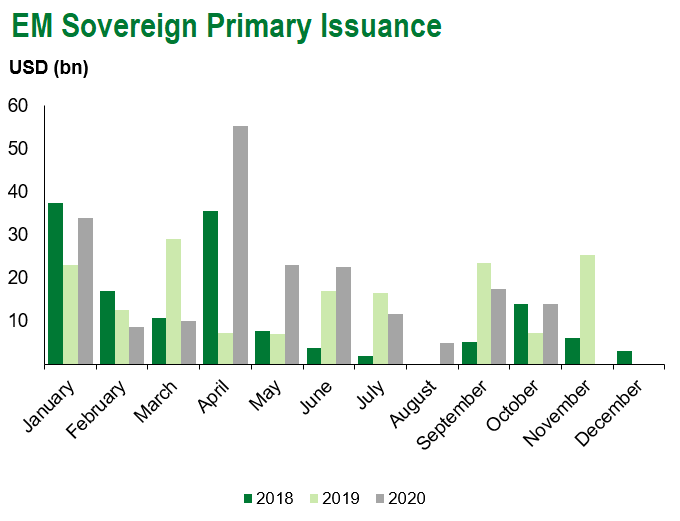
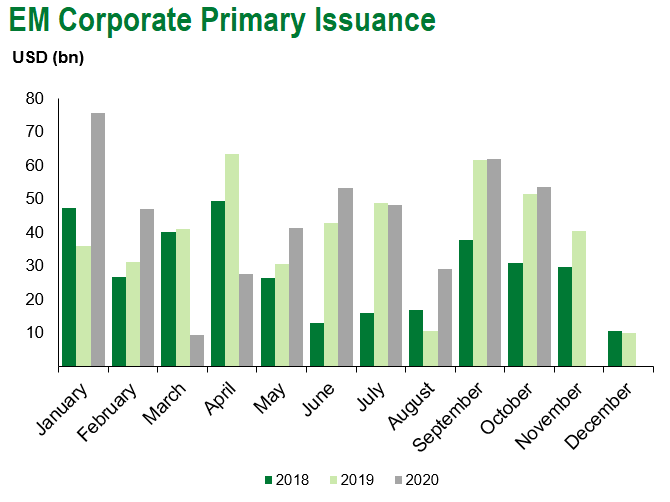
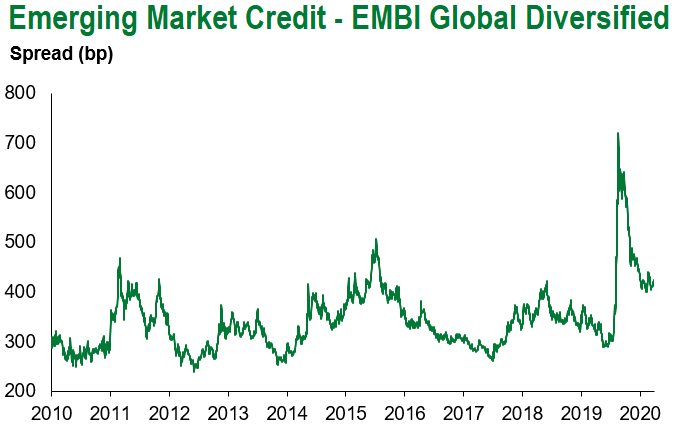
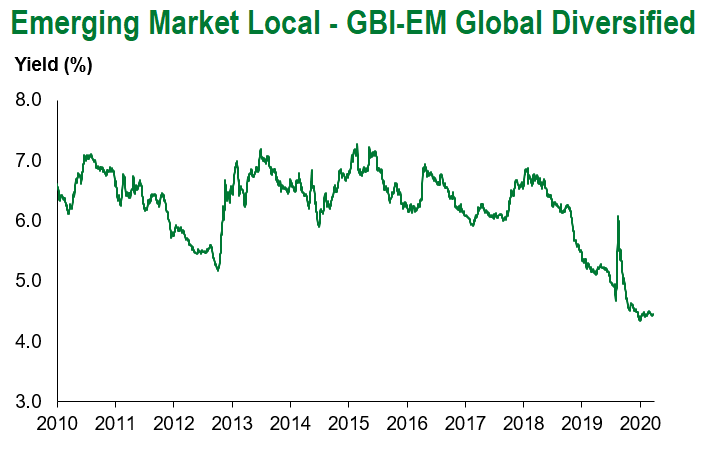
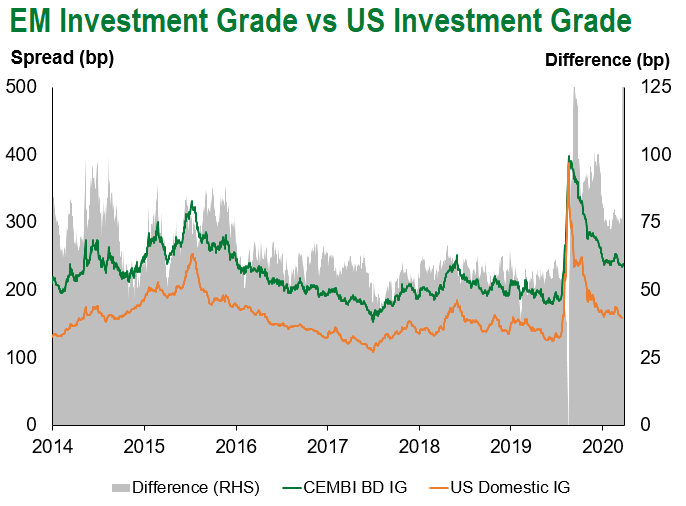
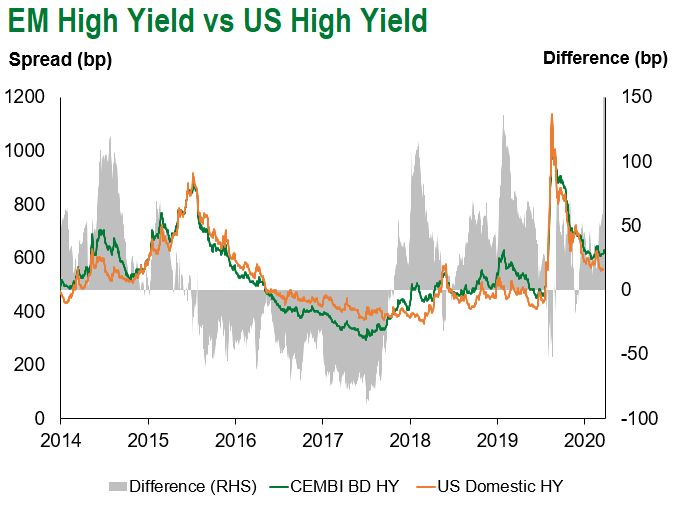
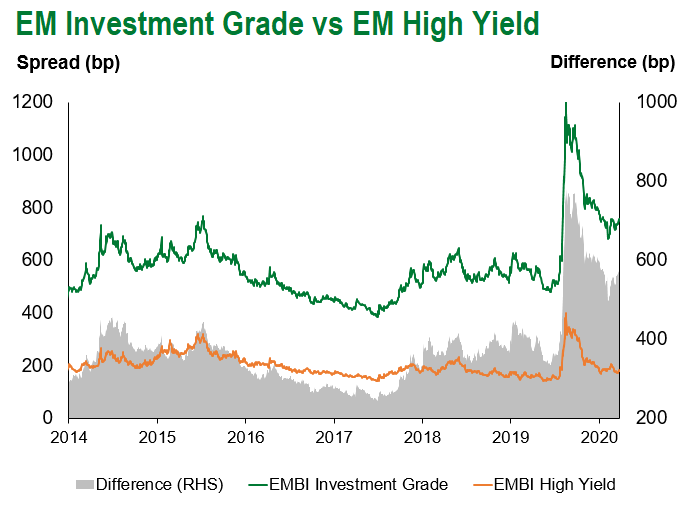
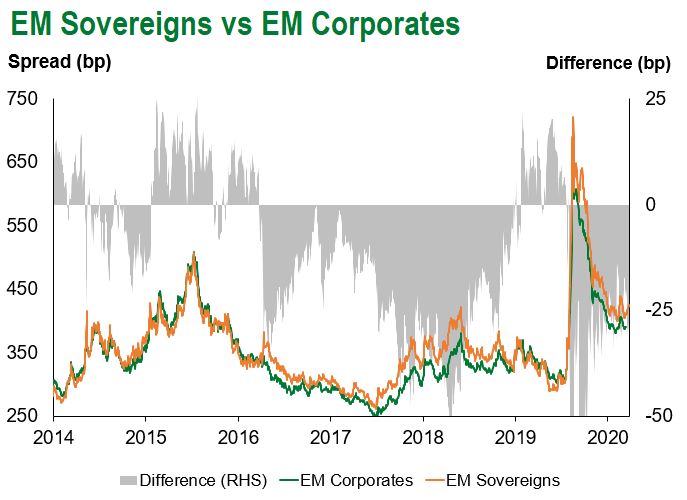
Emerging Markets Flows
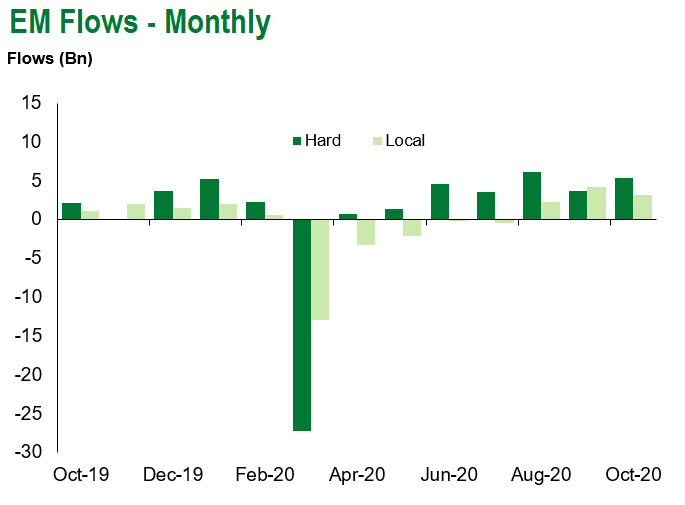
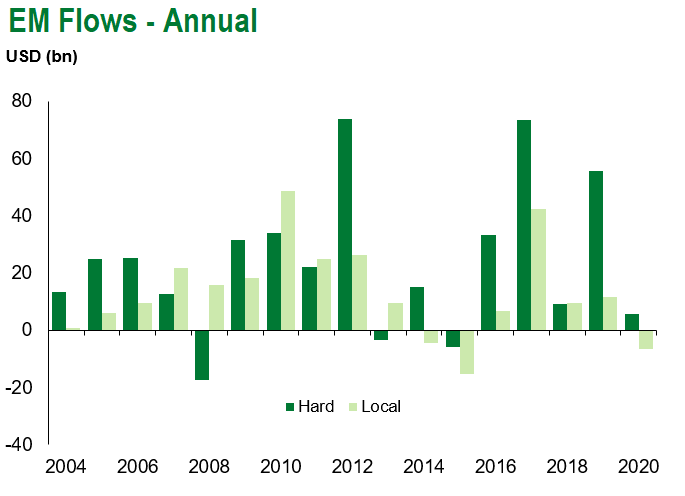
Source for graphs: Bloomberg, JPMorgan, Gramercy. As of October 30, 2020.
COVID Resources
Emerging Markets COVID-19 Case Summary
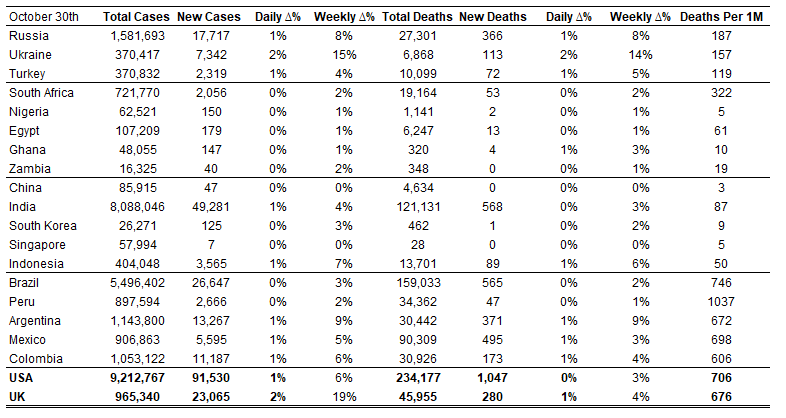
Source: Worldometer as of October 30, 2020.
Additional Crisis Resources:
Johns Hopkins COVID-19 Case Tracker
For questions, please contact:
Kathryn Exum, Senior Vice President, Sovereign Research Analyst, [email protected]
Petar Atanasov, Senior Vice President, Sovereign Research Analyst, [email protected]
Tolu Alamutu, Senior Vice President, Corporate Research Analyst, [email protected]
James Barry, Vice President, Corporate Research Analyst, [email protected]
This document is for informational purposes only. The information presented is not intended to be relied upon as a forecast, research or investment advice, and is not a recommendation, offer or solicitation to buy or sell any securities or to adopt any investment strategy. Gramercy may have current investment positions in the securities or sovereigns mentioned above. The information and opinions contained in this paper are as of the date of initial publication, derived from proprietary and nonproprietary sources deemed by Gramercy to be reliable, are not necessarily all-inclusive and are not guaranteed as to accuracy. This paper may contain “forward-looking” information that is not purely historical in nature. Such information may include, among other things, projections and forecasts. There is no guarantee that any forecasts made will come to pass. Reliance upon information in this paper is at the sole discretion of the reader. You should not rely on this presentation as the basis upon which to make an investment decision. Investment involves risk. There can be no assurance that investment objectives will be achieved. Investors must be prepared to bear the risk of a total loss of their investment. These risks are often heightened for investments in emerging/developing markets or smaller capital markets. International investing involves risks, including risks related to foreign currency, limited liquidity, less government regulation, and the possibility of substantial volatility due to adverse political, economic or other developments. The information provided herein is neither tax nor legal advice. Investors should speak to their tax professional for specific information regarding their tax situation.